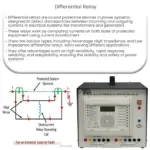Explore the Laplace transform, its benefits, applications, and an example calculation in this concise, informative article.
Laplace Transform: A Powerful Mathematical Tool
The Laplace transform is a widely-used technique in the realm of mathematics and engineering, enabling the analysis of complex systems with ease. This integral transform has a significant impact on the study and resolution of linear differential equations, electrical circuits, and control systems, among other applications. The Laplace transform plays a crucial role in simplifying the mathematical representation of a function, thereby facilitating its manipulation and evaluation.
Basics of the Laplace Transform
Introduced by French mathematician Pierre-Simon Laplace in the 18th century, the Laplace transform converts a function of time, denoted as f(t), into a function of complex frequency, denoted as F(s). This conversion is achieved through the following equation:
- L{f(t)} = F(s) = ∫0∞ f(t) e-st dt
In this equation, s is a complex variable with real and imaginary parts, while e-st serves as the kernel of the transform. The integration is performed with respect to the time variable, t, from 0 to infinity.
Benefits and Applications
The Laplace transform boasts several advantages that have led to its widespread adoption:
- It simplifies complex functions, making it easier to handle and solve differential equations.
- It allows for the direct analysis of system stability and response.
- It streamlines the calculation of convolution integrals, frequently encountered in signal processing and system analysis.
Due to these benefits, the Laplace transform has found applications in a multitude of fields, including:
- Electrical engineering: analysis and design of circuits, filters, and control systems
- Mechanical engineering: study of dynamic systems, such as vibrations and control systems
- Chemical engineering: analysis of chemical reaction kinetics and process control
- Physics: heat conduction, wave propagation, and quantum mechanics
- Economics: evaluation of economic models and financial systems
Inverse Laplace Transform
Alongside the Laplace transform, the inverse Laplace transform is equally important. It is used to revert a function in the complex frequency domain back to its original time-domain representation. The inverse Laplace transform is defined as:
- L-1{F(s)} = f(t) = (1/2πi) ∫γ-i∞γ+i∞ F(s) est ds
This integral is evaluated along a vertical line in the complex plane, known as the Bromwich contour. The process of inverting the Laplace transform enables the recovery of time-domain information from the frequency-domain analysis, a vital step in understanding and interpreting the behavior of the system under study.
Example of Laplace Transform Calculation
Let’s consider a simple example to illustrate the calculation of the Laplace transform. We will find the Laplace transform of the function f(t) = e-at, where a is a positive constant.
Recall the Laplace transform formula:
- L{f(t)} = F(s) = ∫0∞ f(t) e-st dt
Substituting the given function into the formula, we get:
F(s) = ∫0∞ e-at e-st dt
Combine the exponentials:
F(s) = ∫0∞ e-(a+s)t dt
Now, integrate with respect to t:
F(s) = [-1/(a+s)] e-(a+s)t | 0∞
Evaluate the limits:
F(s) = [-1/(a+s)] [0 – e0]
Simplify the expression:
F(s) = 1/(a+s)
Thus, the Laplace transform of f(t) = e-at is F(s) = 1/(a+s).



